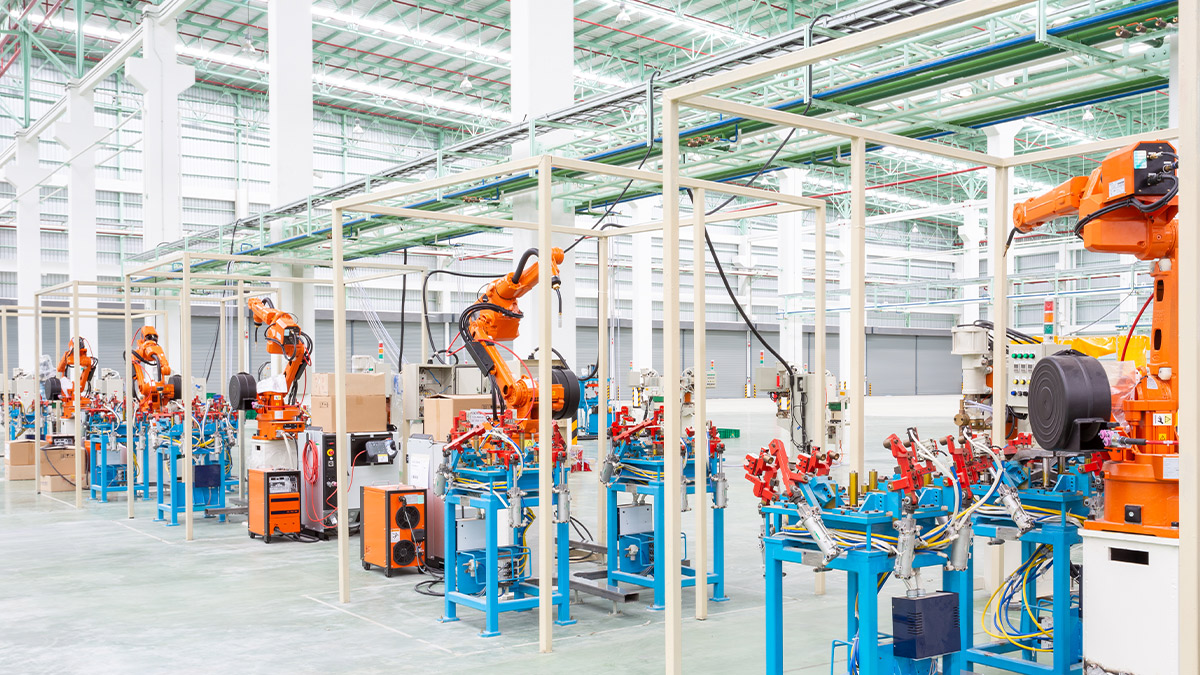Our global supply chains are stressed and under pressure, not only because of material shortfalls and shipping delays, but also due to labor shortages in key sectors. Skills shortages are now seen across all points of the supply-chain continuum, from sourcing to production, logistics, and delivery of goods and services.
These gaps range from more manual tasks, such as warehouse order picking, to building and maintaining supply-chain systems. Technology is now advanced enough to fill in many of the gaps resulting from skills shortages but cannot do it alone. Rebuilding distressed supply chains will require a combination of technology and human skills development strategies.
Recruiting and keeping qualified workers is cited as the leading challenge for the 2,000 supply chain executives responding to a recent survey by MHI, a supply-chain industry trade association. A majority, 57%, state that hiring and retaining qualified workers is this year’s greatest challenge, along with 56% struggling with ongoing specific talent shortages.
A range of industries sensitive to supply-chain vulnerabilities face labor shortages, led by durable goods manufacturing, wholesale and retail trade, and health services, according to an analysis by of the U.S. Chamber of Commerce. “Even if every unemployed person with experience in the durable goods manufacturing industry were employed, the industry would fill only around 75% of the vacant jobs,” the report states.
Sensitive Industries
Executives and experts across affected industries agree it’s urgent to solve skills shortfalls. Economic headwinds could soften employment demand, but acute staffing challenges are here to stay. Long-term factors such as an aging population and rapidly evolving technology skills gaps have become the new norm in staffing.
Manufacturing, in particular, represents “the point of the spear for the supply chain,” says Joe Walden, supply chain professor at the University of Kansas. “The labor shortages are hitting these folks the hardest. Regardless of the labor situation at other links in the supply chain, the shortage at this level impacts the availability of products for the consumer.”
Within the logistics and distribution sector, “labor shortages are affecting the movement of goods,” says Yikun Shao, B2B North American supply chain leader for Alibaba.com. “Understaffing in logistics areas could lead to delayed shipping, delayed port loading and unloading, shortages of truck drivers and inventory stock-outs, difficulties in fulfilling customer orders on time, and a variety of other challenges.”
This, in turn, adversely affects retailers and distributors downstream. “The high cost of labor mixed with ongoing demand for talent has become a detriment to merchants and their fulfillment processes,” says Kelton Kosik, head of supply chain at Ware2Go, a division of UPS. “Even as the strain on global supply chains has somewhat leveled out, a lack of talent during peak shipping seasons — like Cyber Monday and holiday sales events — and abilities to manufacture, move and deliver products can deflate or slow the economy.”
Technology to the Rescue?
To address these issues and automate many skills requirements, companies are ramping up their technology investments, the MHI survey shows. Close to three in four of supply chain executives, 74%, are increasing their investments in technology. A majority, 58%, cite artificial intelligence as their current leading area of investment, along with 54% looking to intelligent partner networks through the industrial Internet of Things.
However, there is a catch-22 to deploying technology to resolve skills gaps — finding the skills up front to build and maintain AI and IoT systems. Supply-chain executives in the survey cite “lack of adequate talent” as a major hinderance to implementing technologies such as AI or IoT. “Ironically, talent is both a barrier and beneficiary when it comes to implementing innovative technologies,” the report’s authors state. “Although deploying technology to automate routine tasks requires talent and manpower, once the technology is up and running it can free up workers to focus on higher-value tasks that require human involvement.” Higher-value tasks may include working more closely with customers or clients, or coordinating and monitoring the flow of goods or services.
Time to Act
A combination of technology and proactive skills development efforts are needed for companies to attract and maintain the skills essential to supporting supply chains, as well as managing the technology to move things forward. Businesses can “increase the productivity of their workers by shifting them from repetitive tasks into roles that current technology is ill equipped to handle,” says Ricardo Ungo, professor and director of the Maritime, Ports and Logistics Institute at Old Dominion University. “This is a necessary step toward the digitalization of the whole chain, providing much needed visibility.”
The following actions can help address skills shortages within supply chains:
Target technology investments.
“Small to medium enterprises may have a more limited capital investment capability,” says, says Keith Fisher, the president of Honeywell Intelligrated. “They need to prioritize solutions with a clear return on investment. For example, by incorporating automation into parts of their business with high turnover rates, small businesses might see a greater impact on improved productivity for a more immediate ROI.”
Position technologies to pick up the slack for manual or repetitive tasks.
All-encompassing automation approaches have been particularly helpful within organizations that require scaling up manual or repetitive work, such as distribution operations. Robots, for example, can be employed for scanning, assembling, and moving parts and products across distribution centers or warehouses. Robots, along with automatic storage and retrieval systems, and automation systems, can pick up the slack for many physically demanding jobs,” says Walden.
Such applications “help increase the productivity of distribution center workers by reducing significantly the time spent traveling from one location to pick products to another,” Walden adds. “Many of the automation concepts from automated picking to robotic pallet building to automated packaging are finally finding their way into distribution centers to offset the shortage of workers.”
In addition, comprehensive automation is “providing opportunities to integrate automation and robotics capabilities to fill labor gaps and manage mundane tasks like automated taping, label applications and scanning,” says Kosik. “Remaining talent can focus on more pressing tasks as well. Companies can use AI for better demand forecasting to ensure labor is being most efficiently allocated.”
Leverage technology to enhance the work of employees.
At their core, supply chains will always be more than automated systems or algorithms exchanging information and purchase orders. “Supply chains are social networks,” writes Yossi Sheffi, professor of engineering systems at the Massachusetts Institute of Technology, in his book, The Magic Conveyor Belt: Supply Chains, AI, and the Future of Work. “When it comes to making decisions in a supply chain, such as managing exceptions or escalating problems, the personal relationships between the people in the companies and both their customers and suppliers matter. Customer-supplier relationships can be complex “with a web of personal relationships.”
Technology solutions should be purposed to enhance these relationships, as well as increase the productivity of workers at all levels.
For example, “the use of AI-augmented reality allows the employment of people with limited or no experience, because they are instructed by the software to do certain tasks,” Sheffi illustrates.
Another emerging use case for AI filling in for skills shortages is autonomous trucking. For example, a “truck platoon,” led by a human driver in a lead truck, consists of electronically linked trucks that follow the movements of the lead truck. “Many companies are investing in developing Level 4 automated driving technologies to haul freight in long-haul routes, allowing them to overcome a lack of drivers caused by the aversion to the long hours away from home,” Ungo says.
Train and develop employees’ skills to manage modern supply chains.
Organizations should think of talent as also having its own supply chain, Sheffi advocates. This serves “to deliver the skills that people need to enable them to get and retain good jobs,” and from an employer perspective, “to ensure that companies have the skilled talent they need to produce affordable and valuable products and services for customers.”
For small to medium-size businesses, training is essential. “Properly training teams to comprehend the technology’s functionality and operate it effectively is vital,” says Fisher. “This not only helps them get the new technology operational more quickly but improves the adoption and, ultimately, the value of the investment.”
In recent years, there has been a 15% increase in the number of organizations investing in upskilling and reskilling programs, with 41% focusing on working to prepare their workers for new tech-forward supply chain jobs, the MHI survey finds, Upskilling is essential to provide the education and training needed to boost skills across front-line supply-chain jobs. “For example, an operations manager who currently uses Microsoft Excel could be trained on a more sophisticated process to integrate supply chain information using new software for shipping and logistics management,” according to the report.
Today’s supply chains have fragile links — companies are struggling to find and retain the workers they need to keep goods and information flowing. This is an opportunity to step up technology investments to automate as much of the work in production, logistics, and delivery of goods and services as possible. At the same time, technology alone cannot shoulder the scope of work needed. Employers also need to step up their skills acquisition and development, helping workers learn and work with technology to deliver results.
Technology can be employed to “support human workers in countless ways: fostering new capabilities and behaviors; improving operational performance; increasing safety; and supporting a more optimal work-life balance,” the MHI report advocates. “New workplace technologies are emerging that don’t just augment human workers and perform mundane work. Rather, when used strategically, they have the ability to help individuals and teams upskill and reskill their capabilities.”
“Harvard Business Review is a general management magazine published by Harvard Business Publishing, a wholly-owned subsidiary of Harvard University. HBR is published six times a year and is headquartered in Brighton, Massachusetts.”
Please visit the firm link to site






